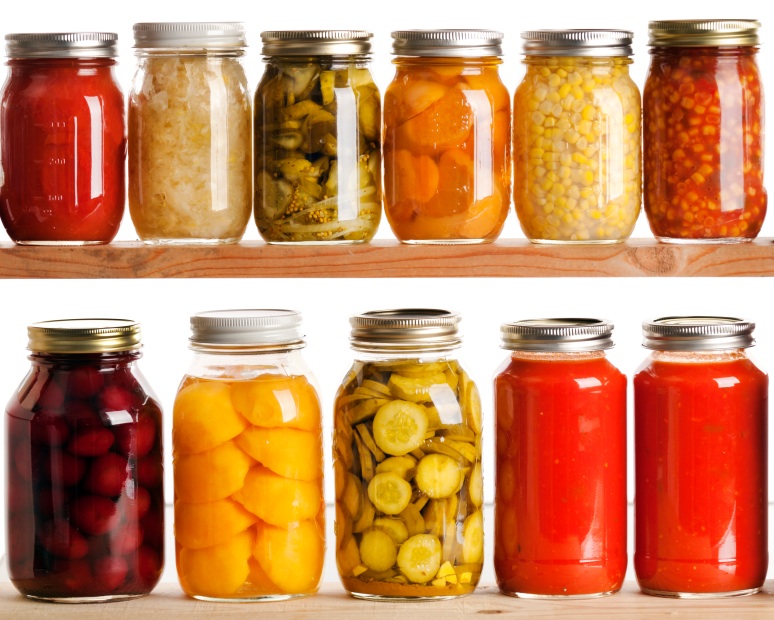Putting Food By
 If you have a garden, your kitchen is beginning to overflow with tomatoes, zucchini, green beans, greens, and other assorted garden goodies. Besides eating as much of this great produce as you can every day, it’s time to figure out how to preserve them for the winter.
If you have a garden, your kitchen is beginning to overflow with tomatoes, zucchini, green beans, greens, and other assorted garden goodies. Besides eating as much of this great produce as you can every day, it’s time to figure out how to preserve them for the winter.
Freezing and dehydrating are easier than canning and a great way to preserve your favorite summer foods. Pickling and fermenting are also methods you can use for putting food by. With a little know-how and practice, you can soon have a cupboard and/or freezer full of beautiful, ready-to-go food for the cold months.
Thoughts to Consider for Food Preservation:
Freezing
- For long-term freezing, the temperature of your freezer should be zero degrees.
- Thoroughly cool cooked soups or sauces before freezing.
- Steam or blanch vegetables in boiling water, then dip into ice water to stop the cooking. Drain well before freezing.
- If preserving greens such as collards or kale, chop first, cook briefly, cool, and pack into freezer bags.
- Make the food into its end product before freezing. Make tomato sauce instead of freezing whole tomatoes. Bake zucchini bread instead of freezing shredded zucchini.
- Make fruit sauce by simmering cut up fruit in a pot until thick. Add a little sweetener if desired and purée or leave chunky. Cool completely before freezing.
- Spread washed/dried berries or sliced fruit in a single layer on a cookie sheet in the freezer, then pour into a container after frozen.
Dehydrating
- Commercial dehydrators, solar dehydrators, or your oven can be used for drying. Oven temperature should be 120° F to dry but not cook the food. Read this article in Mother Earth News comparing food dehydrators.
- Dried vegetables should be brittle, fruits should be pliable but not sticky. If they’re not completely dry, store in the refrigerator.
Other methods
 Fermentation is a time-honored method of putting food by. Learn more about fermentation HERE or read this article about how to make fermented sauerkraut.
Fermentation is a time-honored method of putting food by. Learn more about fermentation HERE or read this article about how to make fermented sauerkraut.- Pickling is achieved by preserving prepared ingredients in a hot spiced vinegar solution. You should follow a recipe carefully for best results. (See below for resources.) You can pickle a variety of foods besides cucumbers: cantaloupe, apples, pears, beets, beans, peppers, or watermelon rinds.
- Make flavored vinegars. Infuse white wine or balsamic vinegar with fruit or herbs.
Resources:
- So Easy to Preserve by the Cooperative Extension Service of the University of Georgia, a complete resource for canning, pickling, freezing, and drying foods. This is the book we use for our canning classes we do with MSU.
- Wild Fermentation, Sandor Ellix Katz
- How to make homemade flavored vinegars website